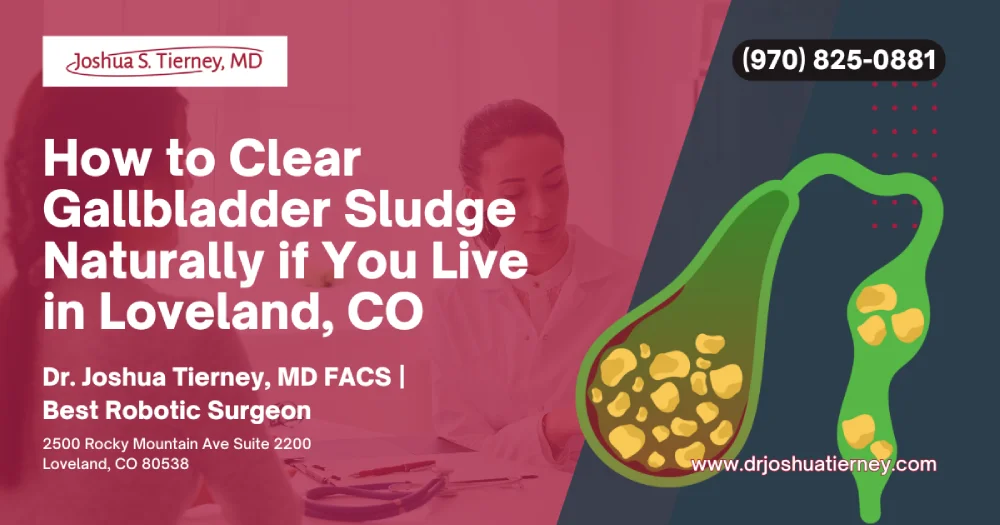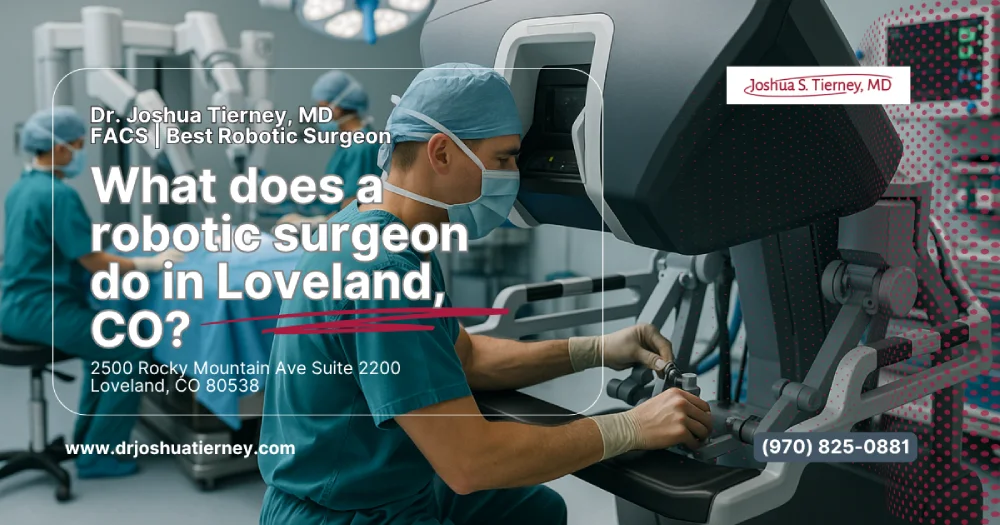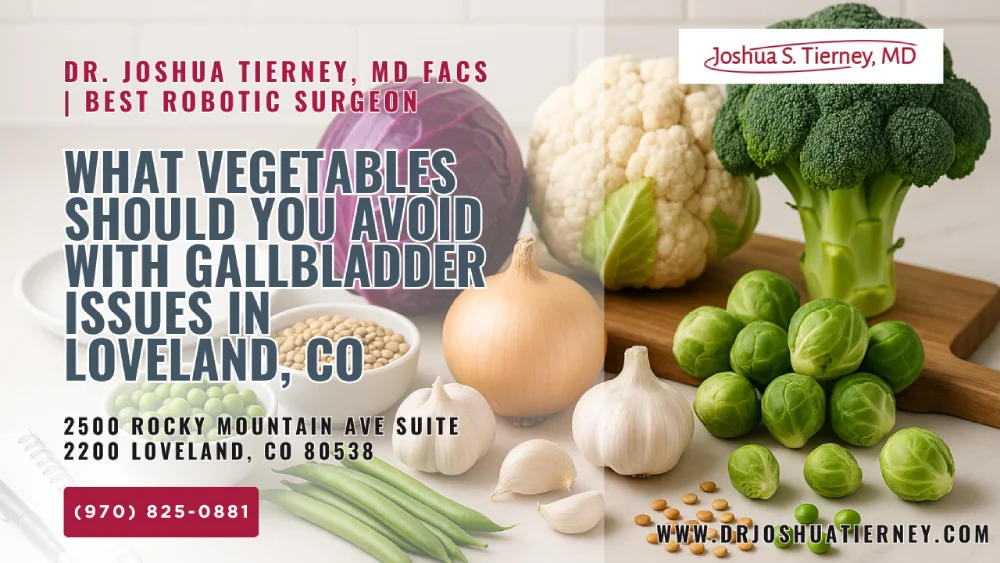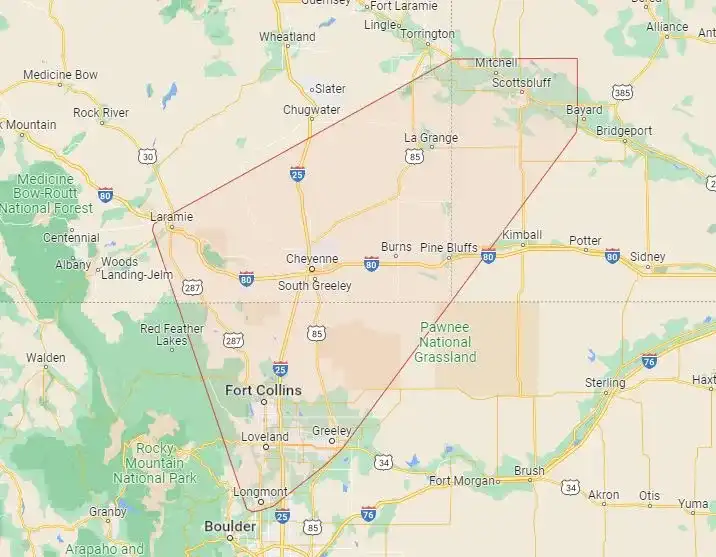Navigating your plate after a laparoscopic cholecystectomy is tricky enough at sea level—add Northern Colorado’s higher altitude and even mild digestive distress can feel magnified. Whether you had surgery at UCHealth Medical Center of the Rockies, McKee Medical Center, or Skyline Endoscopy Center, you probably left recovery with one big question: “What on earth can I eat now?”
Below, Dr. Joshua Tierney, board-certified gastroenterologist and gallbladder surgeon serving Loveland, Greeley, and the Fort Collins area, breaks down the foods most likely to trigger post-meal cramping, bloat, and urgent trips to the restroom—and shares local, flavorful swaps so you can still enjoy life on the Front Range.
Key Takeaways for Gallbladder-Free Living
- Bile now drips slowly into your small intestine rather than pulsing in strong bursts, so high-fat meals overload digestion and can cause diarrhea, oily stool, or abdominal discomfort.
- Skipping fried fare at Loveland’s brewery patios, trimming visible fat from meats, and choosing broth-based soups protect gallbladder health even after the organ is gone.
- Gradually increase soluble fiber; oats, apples, beans, and artichoke help bind excess bile, normalize bowel movements, and “keep your gallbladder happy”—or more accurately, keep your liver and gallbladder system running smoothly.
- Limit caffeine, spicy sauces, and alcohol to reduce the risk of dehydration, reflux, and severe abdominal pain related to rapid bile flow.
- If symptoms persist, early diagnosis with endoscopic ultrasound, colonoscopy, or ERCP (endoscopic retrograde cholangiopancreatography) at a center in Greeley or Loveland can rule out lingering gallstone fragments, sluggish bile ducts, or issues with the sphincter of Oddi.
Why Post-Surgery Diet Changes Matter
Before surgery, your gallbladder concentrated bile so it could quickly emulsify dietary fat. Now that reservoir is gone; bile trickles out continuously and becomes less potent. When you down a bacon cheeseburger, the available bile can’t keep up, so partially digested fat ferments, feeding gas-producing bacteria and leading to cramps or loose stools. Understanding this plumbing shift empowers you to make choices that support overall digestive health instead of triggering pain.
The Northern Colorado Angle
Living above 4,500 feet means slightly lower atmospheric pressure, which may allow intestinal gas to expand more. Pair that with the heavier, often fried comfort foods popular in ranching communities, and post-cholecystectomy digestion can become dicey. Hydrating consistently helps; aim for at least 64 ounces of lemon water or herbal tea daily to keep bile moving and prevent thicker bile from crystallizing into stones within the ducts.
Foods to Limit—or Skip for Now
High-Fat Meats & Processed Foods
Sausage links, bacon, salami, rib-eye steak, and even some jerky can exceed 20 g of fat per modest portion. Without concentrated bile, that excess fat lingers in the gut, strains the liver, and may even spark pancreatitis if a residual gallstone blocks the bile duct near the pancreas. Swap in lean bison, turkey bacon, or grilled trout from Boyd Lake.
Commercially Fried Favorites
French fries, doughnuts, onion rings, and chimichangas soak up oil. A single funnel cake at a Loveland festival holds nearly a day’s recommended fat intake for someone recovering from gallbladder removal. Instead, air-fry sweet-potato wedges or try kelp noodles tossed with sesame-ginger vinaigrette for a low-fat crunch.
Full-Fat Dairy
Whole milk, heavy cream, and triple-cream Brie combine high milk fat with lactose—a double hit when your gut is sensitive. Experiment with lactose-free 2 % milk, kefir, or cultured cashew yogurt. If calcium is a concern, chat with a local GI specialist about supplementation to avoid bone loss.
Spicy & Acidic Culprits
Capsaicin in jalapeños irritates the stomach lining, while tomato-based sauces heighten acidity. Pair salsa with avocado or Greek yogurt, or shift to herbs like cumin, smoked paprika, and dandelion root, which many herbalists believe supports sluggish bile flow.
Alcohol & Caffeinated Drinks
Craft beer flights at Loveland Aleworks and oversized coffees from downtown cafés can kick the intestines into overdrive. Alcohol also dehydrates, thickening bile. If you indulge, alternate each drink with water and avoid greasy appetizers to prevent a one-two punch of fat plus stimulant.
Fiber-Rich Foods to Embrace
Soluble fiber soaks up excess bile acids like a sponge, reducing urgency and binding loose stool. Northern Colorado’s farmers’ markets are bursting with:
- Oats and barley
- Apples, pears, blueberries
- Lentils, black beans, chickpeas
- Artichoke hearts (fresh or frozen)
Add two tablespoons of ground flaxseed to oatmeal, toss beans into salads, or blend fruit into smoothies. Increase intake slowly to avoid gas, and pair with adequate fluid to keep material moving through the bowel smoothly.
Smart Fat Choices
You still need essential fatty acids; the trick is portion control. Aim for 30 % or less of total calories from fat—roughly 50 g for a 1,600-calorie diet. Choose:
- ¼ avocado on toast
- 1 Tbsp extra-virgin olive oil drizzled after cooking
- 10 almonds or walnuts as a snack
- 3 oz of salmon once or twice a week for omega-3s
Some patients tolerate MCT oil because it bypasses standard fat-digestion pathways, but introduce slowly and monitor stool consistency.
Meal Timing & Portion Strategies
Four to six mini-meals beat three jumbo plates post-surgery. Smaller “grazing” portions align with the constant trickle of bile, minimizing fermentation and gas. Chew thoroughly and place your fork down between bites; mindful eating helps you detect fullness cues and prevents overeating.
Lifestyle Tweaks that Protect Digestive Comfort
Stay Hydrated
Higher altitude increases insensible fluid loss. Dehydration concentrates bile salts, encouraging particles to clump and crystallize into stones along ducts even after gallbladder removal. Drink water flavored with cucumber or lemon and track intake in a phone app.
Gentle Movement
A 20-minute walk on the Loveland Recreation Trail after dinner sparks intestinal motility. Low-impact yoga engages the diaphragm, enhances circulation to abdominal organs, and eases stress that can magnify GI symptoms.
Stress Management
Cortisol spikes tighten the gut. Box breathing, meditation sessions at local studios, or quick hikes in Rocky Mountain National Park keep hormones—and your bowels—calm.
When to Consult a Specialist
Ongoing oily stool (steatorrhea), unintended weight loss, or upper-right abdominal discomfort may signal complications. Centers for Gastroenterology provides top-rated diagnostics across Northern Colorado; their board-certified physicians can order:
- Ultrasound or CT to detect residual cholesterol stones
- Endoscopic ultrasound to visualize ducts
- ERCP to extract stones or widen narrowed passages
- Lab work to assess pancreatic enzymes and liver function
Early intervention prevents chronic inflammation, pancreatitis, or malabsorption of fat-soluble vitamins A, D, E, and K.
Understanding Gallbladder Problems Before They Start
Family History & Risk Factors
A family history of gallstones, rapid weight loss, high-cholesterol diets, and inflammatory bowel disease (like colitis) elevate risk. Women, adults over 40, and Native American populations see higher rates of gallstone formation.
Recognizing Early Red Flags
Intermittent right-upper-quadrant pain, nausea after fatty foods, or referred shoulder discomfort shouldn’t be brushed off as “just gas.” Early imaging at Poudre Valley Hospital or Medical Center of the Rockies can diagnose the cause and let you develop a treatment plan before stones block the ductwork.
Non-Surgical Options
In the right patient, ursodeoxycholic acid, dandelion, or artichoke extracts may thin bile, though data are mixed. Losing weight gradually, spacing meals, staying active, and keeping fluid intake high reduce risk that bile will become stagnant, thicken, and trigger stone formation.
Keeping Your Gallbladder Happy—Even After Removal
Although your gallbladder is gone, the goal remains the same: promote smooth bile flow, protect the ducts, and avoid unnecessary strain on the liver. By embracing lean proteins, fiber-rich carbs, measured healthy fats, and mindful movement, you safeguard your entire hepatobiliary system, not just one organ. Over time, many Loveland residents discover they can reintroduce the occasional fried pickle or pepperoni slice—just in smaller portions and paired with plenty of water, salad, and a relaxing post-meal stroll along Lake Loveland.
Conclusion
Living without a gallbladder in Loveland, CO, doesn’t condemn you to bland food or social isolation. By minimizing greasy, high-fat items, experimenting with low-lactose dairy, adding soluble fiber, and staying hydrated, you’ll tame bloat, protect duct health, and relish Northern Colorado’s food scene. Track your reactions, seek guidance when needed, and remember: digestive calm is possible, even without that tiny bile-storing pouch.
Frequently Asked Questions
Can altitude worsen post-cholecystectomy bloating?
Northern Colorado’s thinner air lowers external pressure, so intestinal gas expands slightly more than at sea level. That can magnify post-meal bloating. Counteract the effect by avoiding carbonated drinks, walking after you eat, and sipping warm peppermint tea to relax GI muscles and help trapped gas escape comfortably.
Is lemon water really helpful for bile flow?
Yes—citrus acids in lemon stimulate the liver to produce thinner bile, while warm water hydrates. Though not a cure-all, starting your morning with eight ounces of warm lemon water can promote gentle bile movement, reduce sluggishness, and support detox pathways without over-stimulating the gut.
How soon after surgery can I resume spicy green chili?
Most patients can trial mild peppers about six weeks after surgery. Begin with a tablespoon of green chili on eggs, track symptoms for 48 hours, and gradually increase. If you notice heartburn or cramping, wait another few weeks and try again with a lower-fat, tomato-free variety.
Will a high-fiber diet cause more gas?
Initially, yes. Introducing beans, lentils, or oat bran too fast can produce gas as gut bacteria adapt. Prevent discomfort by adding one new fiber food every three days, chewing thoroughly, and drinking an extra glass of water for each five grams of added fiber.
Are plant-based meats easier on digestion?
Many plant-based patties are lower in saturated fat than beef, which helps post-gallbladder digestion. However, they may be high in salt and artificial binders. Read labels, choose versions with fewer than 10 g of fat per serving, and pair with whole-grain buns and plenty of veggies.
How do pancreatic enzymes help after gallbladder removal?
Supplemental pancreatic enzymes break down fats, proteins, and carbohydrates more efficiently when natural bile flow is weak. Taken at meal start, they reduce steatorrhea, cramping, and nutrient malabsorption. Always ask a GI specialist before starting, as dosing varies by meal size and fat content.
Is it safe to try intermittent fasting?
Intermittent fasting can work post-surgery if you keep meal fat moderate and hydrate well. Long fasts may concentrate bile; breaking your fast with fatty foods could trigger urgency. Start with 12/12 fasting, listen to your body, and extend only if digestion remains calm.
Could colitis flare after gallbladder removal?
Ulcerative colitis and Crohn’s disease may flare when bile acids reach the colon undiluted. Soluble fiber supplementation and bile-acid sequestrants like cholestyramine can protect the colon. Work closely with your gastroenterologist to adjust medications and diet during the healing period.
Do kelp noodles help curb food cravings?
Kelp noodles are virtually fat-free and high in minerals like iodine. Their crunchy texture adds volume to meals, increasing satiety without taxing bile flow. Toss them with low-fat peanut sauce and shredded veggies for a satisfying, crave-busting dish under 5 g of fat.
When is a colonoscopy recommended after gallbladder surgery?
Most adults need colonoscopy at 45, but persistent diarrhea, unexplained weight loss, or occult blood may warrant earlier screening. A colonoscopy can rule out colitis, polyps, or malignancy contributing to post-surgery symptoms, ensuring your digestive well-being in the Fort Collins and Loveland regions.








